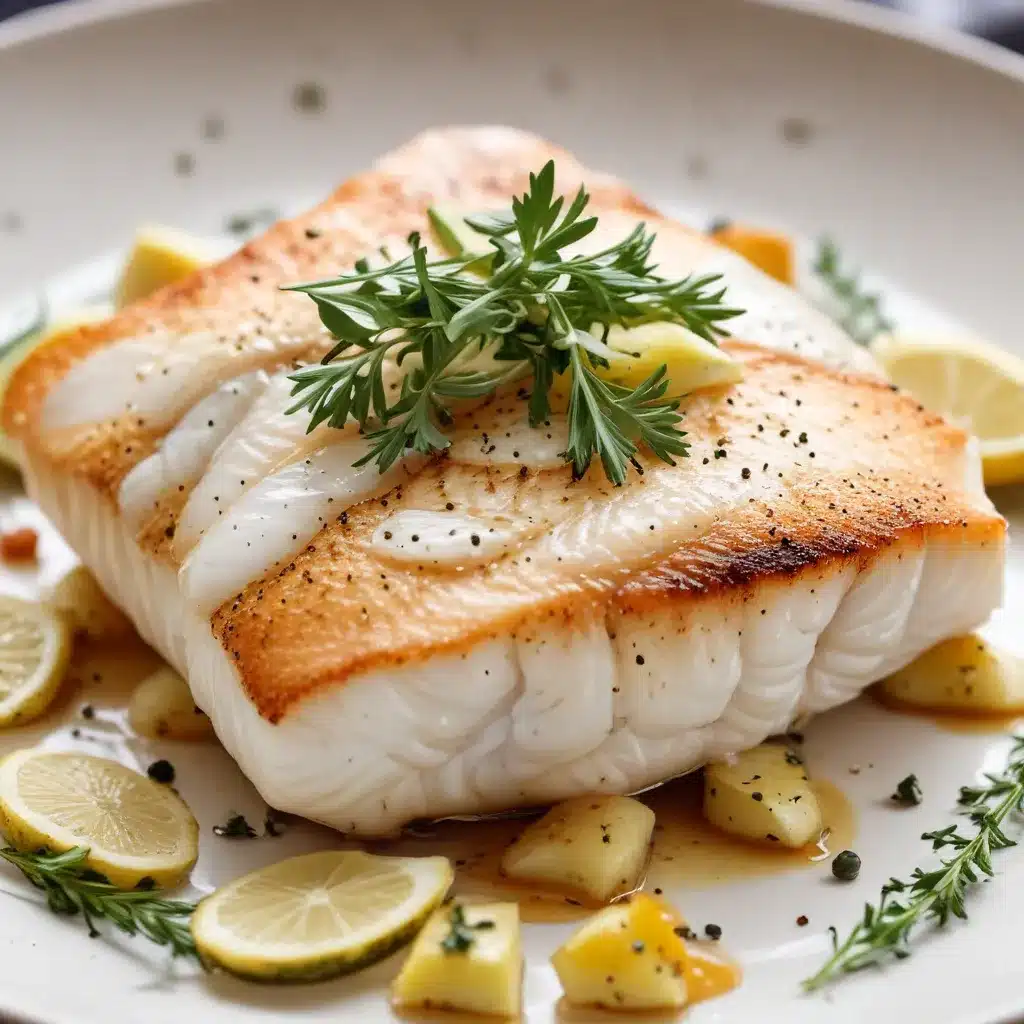
As an expert seafood dining writer for Fish Tales Cafe, I’m thrilled to share my insights on the art of cooking cod – a versatile and delectable white fish prized for its delicate texture and mild, sweet flavor. Whether you’re a seasoned home chef or a seafood enthusiast eager to expand your culinary repertoire, this in-depth guide will equip you with the essential techniques and tips to unlock the full potential of this iconic ingredient.
Cod Preparation Methods
Proper handling and preparation are crucial when working with cod. Start by sourcing high-quality, fresh or frozen cod fillets from a reputable fishmonger or supermarket. Look for fillets with a vibrant, translucent appearance and a fresh, mild scent. Avoid any that have a strong fishy odor or a dull, discolored surface. Once you have your cod, storing it correctly is key to maintaining its freshness. If not cooking immediately, keep fresh cod fillets in the refrigerator, covered with plastic wrap or in a sealed container, and consume within one to two days. Frozen cod can be stored for longer, but be sure to thaw it properly in the refrigerator before use.
Seasoning and Flavoring Cod
The delicate nature of cod means it can easily be overwhelmed by heavy seasonings or sauces. Instead, opt for a light touch with a blend of aromatic herbs, citrus, and subtle spices. Try a simple seasoning of sea salt, black pepper, and a squeeze of fresh lemon or lime juice to let the cod’s natural flavor shine. Alternatively, experiment with marinades that incorporate ingredients like fresh herbs, garlic, white wine, or even a touch of honey to enhance the fish’s sweetness.
Cooking Techniques for Cod
Cod is a versatile fish that lends itself well to a variety of cooking methods. Baking, pan-searing, grilling, and poaching are all excellent options that can yield delicious results. When baking, preheat your oven to 400°F (200°C) and cook the fillets for 12-15 minutes, or until the fish flakes easily with a fork. For pan-searing, heat a lightly oiled skillet over medium-high heat and sear the cod for 3-4 minutes per side until the exterior is lightly browned. Grilling cod can impart a wonderful smoky flavor, and poaching is a gentle, low-fat cooking method that helps retain the fish’s moisture and delicate texture.
Achieving Flawless Cod Texture
Ensuring the perfect texture is essential when preparing cod. The key is to avoid overcooking, which can result in a dry, rubbery fish. Cod is cooked perfectly when it becomes opaque, flakes easily with a fork, and reaches an internal temperature of about 145°F (63°C). To maintain moisture, you can try techniques like basting the fish with its own juices or a light sauce during cooking, or wrapping it in parchment paper or foil (known as en papillote) to gently steam the fillets.
Enhancing Cod Flavor
While cod has a mild, delicate flavor, there are plenty of ways to amplify its taste without overwhelming the fish. Complementary ingredients like lemon, dill, parsley, garlic, or even a touch of white wine can brighten and elevate the cod’s natural sweetness. Marinades and sauces, such as a zesty citrus-herb or a rich, creamy beurre blanc, can also add depth and complexity to your cod dishes.
Versatile Cod Recipes
Cod’s adaptability allows it to shine in a wide range of recipes, from simple baked cod with a crisp breadcrumb topping to more elaborate preparations like pan-seared cod with a lemon-caper sauce or grilled cod with a mango salsa. For a gluten-free option, try cod en papillote with a medley of roasted vegetables and a drizzle of olive oil and lemon juice.
Sustainable Cod Sourcing
When purchasing cod, it’s important to prioritize sustainability and traceability. Look for cod that is sourced from well-managed fisheries, adhering to responsible fishing practices that ensure the long-term health of cod populations. Familiarize yourself with the various cod species and their unique characteristics, such as Atlantic cod, Pacific cod, and Alaskan cod, to make informed choices that align with your personal preferences and environmental concerns.
Cod Dietary Considerations
Cod is a lean, protein-rich fish that offers a host of nutritional benefits. It is an excellent source of high-quality protein, vitamins, and minerals, including vitamin B12, niacin, and selenium. For those with dietary restrictions, cod can be a versatile option, as it is naturally gluten-free and can be incorporated into a variety of healthy meal plans, ranging from low-carb to heart-healthy diets.
Pairing Cod with Sides and Garnishes
Complement the delicate flavor of cod with a selection of starch-based accompaniments, such as roasted potatoes, rice, or quinoa. Pair the fish with vibrant vegetable sides, like sautéed spinach, roasted asparagus, or a fresh green salad. Garnish your cod dishes with fresh herbs, citrus zest, or a drizzle of lemon-herb or garlic-infused oil to amplify the overall presentation and taste.
Cod Cooking Tips and Techniques
Mastering the art of cooking cod involves a combination of preparation methods, seasoning techniques, and cooking expertise. Experiment with different cooking times and temperatures to find the perfect balance that yields flaky, moist cod every time. If you encounter any issues, such as the fish breaking apart or becoming dry, refer to our troubleshooting guide to identify and address the problem. With practice and a willingness to explore, you’ll be well on your way to creating flawless, flavorful cod dishes that will impress your family and friends.
Explore the world of cod cooking and discover the endless possibilities at Fish Tales Cafe. Our culinary experts are dedicated to sharing their knowledge and inspiring you to unleash the full potential of this versatile and delightful seafood staple. Happy cooking!

